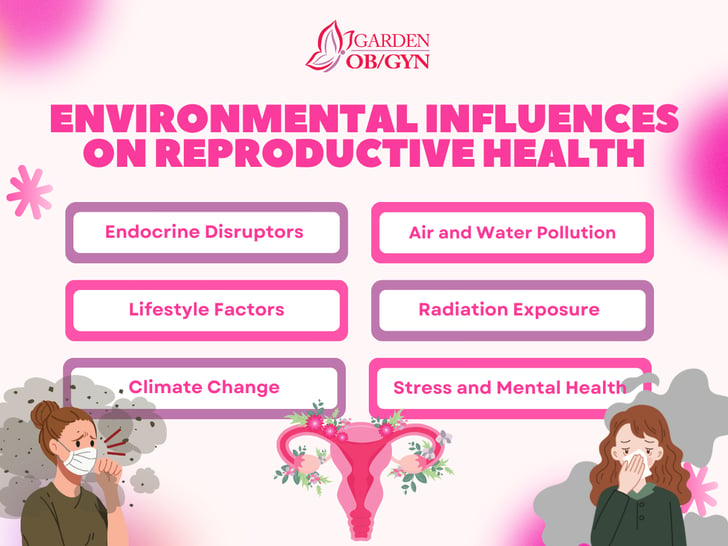Environmental Influences on Reproductive Health
Reproductive health is a crucial aspect of overall well-being, and various environmental factors can significantly influence an individual's reproductive capabilities.

Reproductive health is a crucial aspect of overall well-being, and various environmental factors can significantly influence an individual's reproductive capabilities. The delicate balance required for successful reproduction can be disrupted by pollutants, lifestyle choices, and other environmental elements. Understanding and addressing these factors are essential for maintaining and improving reproductive health.
-
Endocrine Disruptors: Endocrine-disrupting chemicals (EDCs) are substances that interfere with the endocrine system, which regulates hormones responsible for reproduction. Commonly found in pesticides, plastics, and certain industrial chemicals, EDCs can mimic or block hormones, leading to disruptions in the menstrual cycle, reduced fertility, and adverse effects on fetal development.
-
Air and Water Pollution: Exposure to air and water pollutants has been linked to reproductive health issues. Pollutants such as particulate matter, heavy metals, and volatile organic compounds can negatively impact sperm quality, increase the risk of miscarriages, and contribute to birth defects. Long-term exposure may also affect the development of reproductive organs.
-
Lifestyle Factors: Unhealthy lifestyle choices, including smoking, excessive alcohol consumption, and poor nutrition, can detrimentally affect reproductive health. Smoking, for example, has been linked to decreased fertility in both men and women, while excessive alcohol intake may disrupt hormonal balance and impair sperm quality.
-
Radiation Exposure: Prolonged exposure to ionizing radiation, whether from medical procedures or environmental sources, can have detrimental effects on reproductive health. High levels of radiation may lead to genetic mutations, infertility, and an increased risk of birth defects.
-
Climate Change: Climate change poses indirect threats to reproductive health through altered ecosystems, changing disease patterns, and extreme weather events. Disruptions in food and water supply, increased heat stress, and the spread of infectious diseases can all impact reproductive health, particularly in vulnerable populations.
-
Stress and Mental Health: Environmental stressors, such as pollution or climate-related disasters, can contribute to increased stress levels. Chronic stress may lead to hormonal imbalances, affecting menstrual cycles and fertility. Mental health conditions can also impact sexual function and overall reproductive well-being.
The impact of environmental factors on reproductive health is a complex and multifaceted issue that requires comprehensive attention. Efforts to mitigate these effects involve a combination of policy changes, public awareness, and individual lifestyle modifications. Regulatory measures to reduce the use of endocrine-disrupting chemicals, promote clean air and water, and address climate change are crucial steps in safeguarding reproductive health for current and future generations. By recognizing and addressing these environmental factors, we can work towards creating a healthier environment that supports optimal reproductive well-being.
































